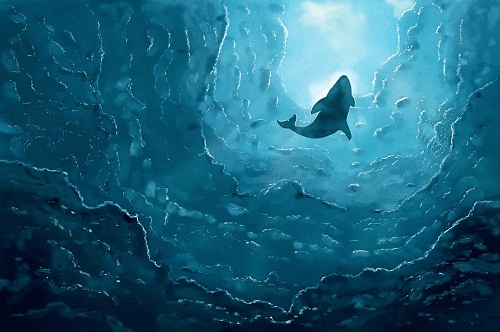Researchers from the University of Otago have identified and named a new species of an ancient baleen whale, which according to researchers, existed more than 27.5 million years ago.
The fossils of this prehistoric whale were discovered in 1988 from a fossil-bearing rock unit in the Hakataramea Valley in South Canterbury, New Zealand. The fossils recovered included a skull and some bones. The rock from which these fossils were discovered dated from the Oligocene period, which extended from about 33.9 million to 23 million years ago. New Zealand was an archipelago at that time and was surrounded by shallow waters, according to scientists.
Fossils unearthed in New Zealand by Otago University academics belonged to an ancestor of minkes and humpbacks that lived about 27.5 million years ago #OnlyOtago #OtagoResearch https://t.co/Z8NQJT8w7K
— University of Otago (@otago) April 19, 2018
Although these fossils were found almost 30 years ago, it was only recently that researchers started a studying them in detail. Cheng-Hsiu Tsai, a former PhD student in the University of Otago’s Department of Geology started his thesis on these fossils a few years ago, which provided an analytical framework to identify and name the new whale species.
“This is a pretty old whale that goes almost half-way back to the age of the dinosaurs. We are tracking whale history back through time,” says Professor Ewan Fordyce, the lead researcher from the University of Otago’s Department of Geology.
“This newly-named whale lived about 27.5 million years ago. It’s about as old a common ancestor as we have for the living baleen whales like the minke whales and the right whales.”
When researchers found these fossils, the skeleton was disarticulated, but the bones were closely associated. Its earbones were also intact, which helped researchers identify the new species. They named it Toipahautea waitaki, which, in Māori language means a baleen-origin whale from the Waitaki region.
According to researchers, this whale was just 19 feet in length, that is, half the size of a modern minke whale. The finding is really surprising as the ancestors of most other animals are believed to be bigger size in the past, based on fossil records. But, the skeleton of this newly identified whale suggests that the forefathers of blue whales were not large in size.
“People look at the fossil record and think the early history of many animals is filled with giants, but not for whales. It’s only in recent geological times that whales have achieved really large sizes,” said Fordyce.
Ewan Fordyce was asked by the National Geography Society to study the fossils of whales in New Zealand about 30 years ago. His team came up with various results in the past years. Their work also suggested that ancient whales were more diverse compared to modern whales.
The detailed findings of the study were published today in the scientific journal, Royal Society Open Science.


